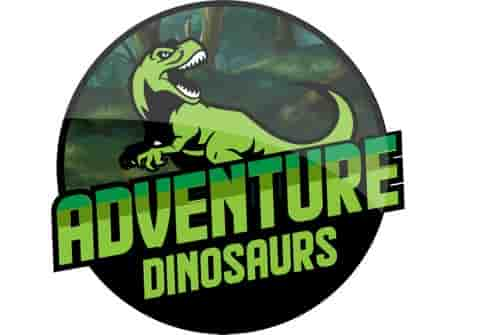Sauropods Vs Prosauropods can be a complex comparison. Many people are familiar with the long-necked dinosaurs – the sauropods. This group of dinosaurs includes some of the largest species that have ever existed on earth. Interestingly, paleontologists have found similar dinosaurs with a long tail and a long neck. Although smaller and the tail and neck are shortened, they existed during the Jurassic and Cretaceous periods. These dinosaurs are known as prosauropods. These smaller long-neck dinosaurs make me wonder, what are the key differences between a sauropod vs prosauropod?
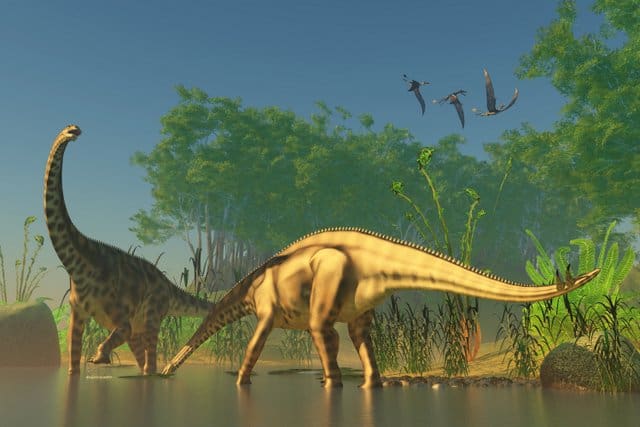
What Are the Differences Between Sauropods vs Prosauropods?
The main differences are that sauropods grew considerably larger with a long tail and neck and bigger trunk size. In some prosauropod species, the neck vertebrae contained neck spikes (dermal spines), and the tail was clubbed, which is completely different from sauropods. Prosauropods are considered basal sauropods (original, ancient) or a sister related species to sauropods.
The similarities of sauropods vs prosauropods are that they were both herbivores. They reproduced by laying eggs, paleontologists believe they could stand on their hind legs to reach forest treetops, and their distribution was worldwide, and they lived in similar habitats. Prosauropods are considered basal sauropods (original, ancient) or a distantly related species of sauropods.
I remember the first time I saw a Diplodocus replica in London, originally found in the Morrison formation of North America and a key representation of a Cretaceous sauropod. Seeing a sauropod’s skeleton in a museum will give you an indication of the massive size of these dinosaurs grew.
Table of Contents
The majority of the widely known long neck dinosaurs are sauropods who lived in the late Jurassic or Cretaceous. However, there were some longnecked dinosaurs whose fossils were found that lived in the upper Triassic period and described by some scientists as basal sauropods, meaning ancestral or original. These long neck dinosaurs had many similarities to the later Cretaceous sauropods.
However, the striking differences were the size, number of claws, and length of the neck and tail. Many paleontologists currently consider the term prosauropods, meaning “before” sauropods, as the correct term to describe these dinosaurs. In the following sections of this article, I will go deeper into the similarities and differences of sauropods vs prosauropods, look at the classification, the habitats where they lived, and list a few of the most significant prosauropods. Read on to find out more!
Sauropods vs Prosauropods
When you see a sauropod’s skeleton, the first thing that jumps out at you is the dinosaur’s massive size. The height and length are incredible. I already mentioned the Diplodocus replica skeleton I saw at a museum in London.
Recently I visited the Helsinki Museum of Natural History, where I saw my first prosauropod dinosaur, the Shunosaurus lii. It was considerably smaller than the Diplodocus, but it was still an amazing skeleton to see. Looking closer at the fossil displayed, I noticed some differences that I don’t remember seeing with the Diplodocus. That’s what I’ll cover in this section. Let’s jump in.
Which Dinosaur is a Sauropod?
Sauropods are known for their long neck and equally long tails. The neck’s shape is considered to be “S-curved,” and this neck posture is evident in fossils on many continents.
Sauropods are classified as Sauropodomorpha. They are known as the largest creatures to have existed on earth based on fossil evidence. The largest species of this classification of dinosaurs also includes the Titanosauria, which have been found on many continents. Sauropods existed during the Late Jurassic and Cretaceous periods of the Mesozoic era and disappeared during the mass extinction event in the late Cretaceous period.
Fossil evidence of these dinosaurs includes skeletons, eggs, and footprints. These sauropod fossils have been found in North and South America, Europe and Africa, Asia, and Australia.
Sauropod dinosaur tracks and footprints are publicly well-known in Spain, France, Australia, the United States, and Argentina.
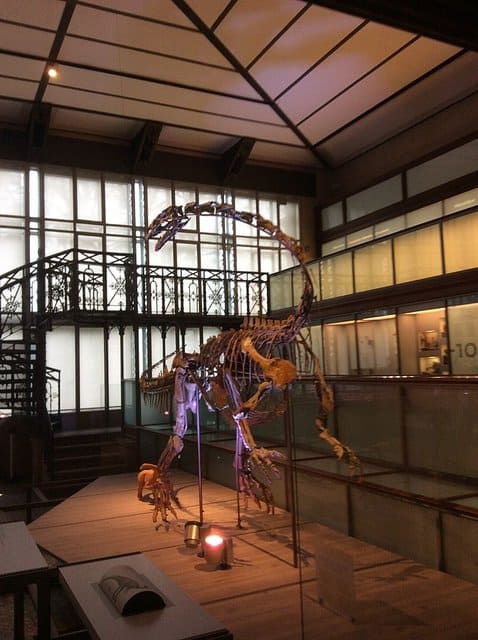
What are Prosauropods
Prosauropods fossils indicate that these dinosaurs lived primarily during the Jurassic, although some fossils are dated from the Cretaceous periods. As many of them have been found in the early and mid-Jurassic periods, some paleontologists believe they were the evolutionary step to sauropods. Interestingly, some paleontologists reject this idea and think that prosauropods are a sister taxa and separate species altogether. (Source)
The fossils of prosauropod dinosaurs have been found in similar geographical places as sauropods, for instance, in Argentina. Although no one knows for sure, prosauropods and sauropods could likely have lived at the same time.
Prosauropods were herbivorous, eating vegetation from the tops of trees and ground vegetation as this dinosaur with smaller.
Sauropods VS Prosauropods Comparison- How Are Sauropods and Prosauropods Similar and Different?
There are some similarities between sauropods and prosauropods that, taken together, have some significance. Comparing sauropods vs prosauropods can be challenging beyond the size differences, but few areas stand out. Some of these similarities are:
Here is an organized table summarizing the similarities and differences between prosauropods and sauropods. Please note that these findings are based on the analysis of fossils and related research.
| Similarities | Differences | Description |
|---|---|---|
| Herbivorous | Neck and shape | Both groups of dinosaurs were plant-eaters. However, the neck of prosauropods was considerably smaller than that of sauropods. |
| Teeth | Skull and teeth | The teeth of both groups were designed for grinding vegetation. This remained the same for dinosaurs in the Jurassic and Cretaceous periods. The structure of the skull and teeth can vary between the two groups. |
| Fossils were found in similar geographies | – | Fossils of both prosauropods and sauropods were found in similar locations. |
| Habitats | – | Both groups preferred habitats with similar vegetation and climates. |
| Classification | – | Both groups share the same classification, Sauropodomorpha. Clades of both sauropods and prosauropods are derived from Sauropodomorpha. |
| Anatomy | Body size | Prosauropods were generally smaller in size, with less body mass and smaller tails. |
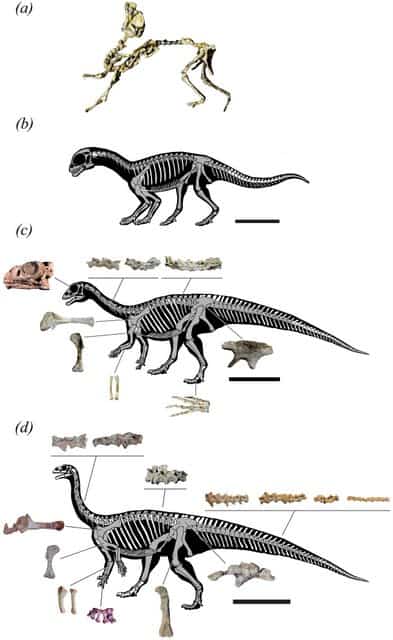
● Neck spikes – on some prosauropod dinosaurs were neck spikes, also known as dermal spines, primarily from prosauropods found in Argentina. Some scientists suggest that they may have been used for defense against predators.
● Tail length– the tail was smaller.
● Armored tail – in some prosauropods species, the tail ended with a bony club or what looks like a leaf shape.
● Toe claws – prosauropods had three toes, unlike sauropods, which had four.
Comparison Table of Sauropods vs Prosauropods
In the comparison table, the first column lists a specific feature. In the second column, sauropod comparisons are made and in the third is the prosauropod comparison.
Sauropod vs Prosauropod Habitats and What Plants They Ate
Sauropods and prosauropods were plant-eaters, and they adapted to their environment and habitat, whether that was coastal deltas or forest lakes. The habitats during the Jurassic period were different than during the Cretaceous. Let’s look at what kinds of habitats there were and the different plants that sauropods feasted on.
During both the Jurassic and Cretaceous, sauropods lived in the following habitats and environments:
● Mixed forests – forests with a variety of tree species
● Swamps – a forested wetland where there is a lot of water surrounding the forest
● Floodplains – plains landscape that flood over with water during the wet season
● Coniferous forests – forests with conifers
● Coastal and Islands – coastal and island habitats are typical forests next to beach areas.
● Riparian forests – forests that are situated next to a body of water like a lake or river
● Riversides – forests or plains next to rivers
Plants that existed during the Jurassic and were found in the forest and swamp habitats were conifers, palms, cycads, and ginkgoes. Flowering plants (the true flowering plants) did not exist until the Cretaceous.
Cretaceous period plants that sauropods likely ate are the same as in the Jurassic, and added to that list are angiosperms, the flowering plants. The forests were likely more densely populated with plants.
Where Sauropods Lived, Their Anatomy and Table of Sauropod Dinosaurs
As we saw from the classification sauropods, they existed for millions of years during the Jurassic and Cretaceous periods and had common features of prosauropods.
Let’s take a deeper dive into the long neck sauropods by examining a bit more about what makes a sauropod a sauropod, learning more about the habitats where they lived, and introduce some of the key species and well-known giant sauropods.
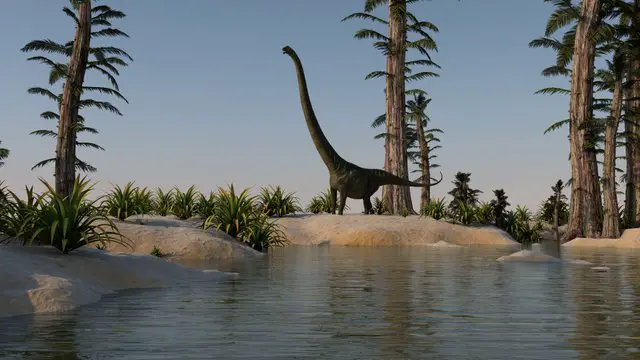
The Sauropodomorpha classification groups of sauropod species into similar traits, but it can be difficult to figure out where these dinosaurs lived and where their fossils were found. It’s also interesting to consider if a sauropod found in China was the same as a sauropod found in North America or South America. I’ll try to clarify in the following section.
Where Did Sauropods Live?
The giant sauropod dinosaur fossils have been found on all continents, including Antarctica (Source).
Paleogeologists believe that the current-day continents were connected, and so the distribution of dinosaurs are covered across geographies, although no one is certain how dinosaurs might have migrated. It is perhaps one reason why sauropods and prosauropods will be covered later and spread across the world.
In the Americas, sauropods such as Brachiosaurus and Diplodocus, and Apatosaurus lived in North America. The Morrison Formation, located in Colorado, New Mexico, Texas, USA, has been a hotbed of sauropod fossils. In South America, many sauropods such as titanosaurs like Argentinosaurus and Dreadnaughtus have been found.
In Europe and Africa, which scientists believe were loosely connected islands during the Jurassic and Cretaceous periods, have excavated sauropod fossils in the UK, Madagascar, and France. Sauropod tracks have also been found in France.
Looking East, in China and Mongolia, sauropods such as Shunosaurus and Mamenchisaurus have been found. Australia is said to have been connected to current-day South America.
Below is a Table of Sauropods, which lists the sauropod, where the fossils were found, the estimated period, and habitat.
Anatomy of Sauropods Plus Their Sizes
The anatomical understanding of a sauropod has progressed and evolved over the decades since the first sauropod fossils were found in North America and Europe. It has also improved because paleontologists have been able to find near-complete skeletons of these giant sauropods. Here is a summary of the anatomy of a sauropod:
● Skull and Neck: The skull of sauropods is small compared to the overall size of the dinosaur. The teeth of the dinosaur were flat and conical, designed to grind vegetation. The neck of the sauropod, comprised of xx to xx vertebrae, is considered to have been held in an “S” position.
● Tail: The sauropod’s tail, in some species like Diplodocus, was as long as the neck, making the sauropod’s length considerably longer. Scientists consider the tail to be long enough to have created a whip-like movement, which may have even created a sonic boom. It also was a way to protect against predators.
● Trunk, Legs, and Foot: The trunk of the sauropod contained most of the dinosaur’s weight. It stood on four legs, but scientists suggest that many species could stand on their back two legs to feed on the treetops. Interestingly, in some species like Brachiosaurus, the two front legs were slightly longer than the back legs.
● Height and Length – Average height and length of sauropods were large. It is hard to get exact measurements from only neck and tail vertebrae fossils and even more difficult if it is a partial skeleton.
● Weight: The weight of sauropods varies. The sauropods in Europe and Africa are considerably smaller dinosaurs.
————————————————————————————————
Related Sauropod Articles You Might Also Be Interested In:
How Did Long Neck Dinosaurs Defend Themselves? 3 Key Defences
Where Did Long Neck Dinosaurs Live? A Global Snapshot
What Are Long Neck Dinosaurs (Types, Size, List)?
————————————————————————————————
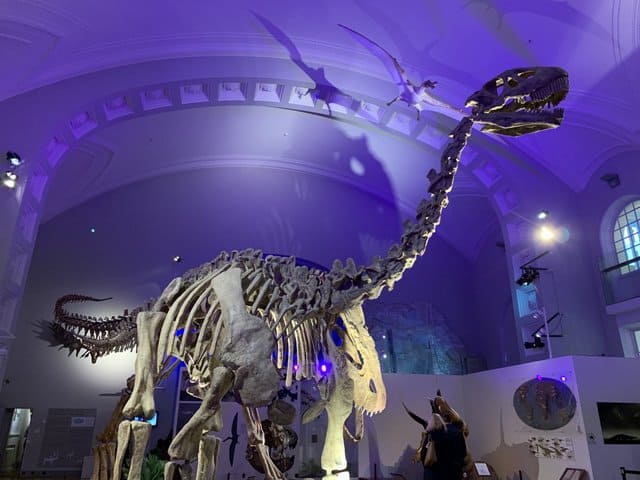
Where have they found Prosauropod Fossils?
Paleontologists have discovered and classified prosauropod fossils on many continents, some of the most amazing ones from Africa, South America, and China. Many of them from the Jurassic period are incomplete, leaving scientists with unanswered questions. However, there are a few fossil finds of prosauropod dinosaurs that are 80 to 90% complete. Let’s take a closer look at where prosauropod fossils have been found and list some of the most well-known prosauropods.
Places Where Prosauropod Fossils Have Been Found
Prosauropod dinosaur fossils have been found on multiple continents. However, many of them have been found in what is now Europe. As mentioned previously, prosauropod fossils have been found in similar places that sauropod fossils were found, leading some scientists to believe they were primitive or evolutionary to the giant sauropods. Here are a few of the basal sauropods that have been found around the world.
In Europe, Plateosaurus fossils have been found in Germany and Greenland. This dinosaur lived during the late Triassic period, roughly 214 – 204 million years ago (Source). Its fossils have also been found in North America. Paleogeologists believe that a large landmass connected to North America, Greenland, and northern Europe existed during the Late Triassic and Jurassic periods.
In Africa, fossil remains of the South African prosauropod Massospondylus have been found, and additionally, scientists have found its nesting grounds. What’s fascinating about this is that these nesting grounds are considered one of the oldest sites of dinosaur eggs and clutches. They have even found eggs with embryos intact. Massospondylus live during the early Jurassic period.
In South America, basal sauropod fossil remains have been found in Argentina and Brazil. The Coloradisaurus, found in Argentina, live during the late Triassic period. A similar prosauropod dinosaur, the Riojasaurus, also lived simultaneously as the Coloradisaurus in Argentina.
In China, the prosauropod Yunnanosaurus’ fossil remains were found. Scientists found 20 partial skeletons but only two skulls. This dinosaur lived during the mid-to-late Jurassic period. The interesting thing about this dinosaur is that the teeth were spoon-shaped and considered an interesting shape for the herbivore dinosaur teeth. (Source).
Conclusion
It’s interesting to note that even though we don’t know for sure whether prosauropods are direct ancestors of sauropods or if they are better described as a close relative, both of them lived during the same periods of the Mesozoic era. Fossils have been found in similar places on multiple continents.
By learning about prosauropods and sauropods, knowing the differences between Sauropods vs. Prosauropods and the similarities of those fossils found gives us a broader understanding of dinosaur ecosystems. It also is a window into evolutionary development and differentiation.
As we find new fossils every year, even of the giant sauropods and early prosauropods, paleontologists get a better view of how the largest species on earth lived and reproduced.
